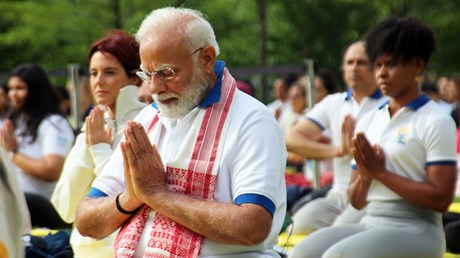Can Christians Do Yoga? Indian Believers Weigh In
Surveying the spectrum of Christian views on the traditionally Hindu practice, from wellness to spiritual caution.

Today’s observance of the International Day of Yoga, proclaimed by the United Nations since 2015 and led by Prime Minister Narendra Modi of India during his visit this week to New York, underscores yoga’s global popularity.
Although not a religion, the ancient Eastern practice is mentioned in the sacred scriptures of Hinduism such as the Bhagavad Gita. A Sanskrit word meaning “union” or “yoke,” yoga aims to unite the body, mind, soul, and universal consciousness, allowing its practitioners to experience freedom, peace, and self-realization.
The practice of yoga involves various physical, mental, and spiritual techniques, including breathing exercises, postures, relaxation, chanting, and meditation. Different styles of yoga exist, each with its own focus and approach to achieving a “unitive state.”
The roots of yoga can be traced back to the Rigveda and the Upanishads. One of the most well-known texts is the Yoga Sutras, written by Patanjali around 200 B.C. In this foundational text, the ancient scholar describes yoga as the cessation of the fluctuations of the mind.
Yoga holds spiritual significance, aiming to control the mind, attain a detached witness consciousness, and liberate oneself from the cycle of birth and death, as stated on one yoga website.
Since assuming office in 2014, Modi’s government has actively promoted yoga as both a cultural and spiritual practice. Yoga has been a prominent soft power tool for India’s foreign policy.
However, a massive study conducted by the Pew Research Center of almost 30,000 Indian adults found that 6 in 10 said they never practice yoga—including 6 in 10 Hindus. Only 35 percent of respondents reported having “ever” …